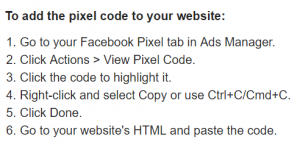A visitor lands on one of your landing pages. They scroll through, shrug their shoulders, and click away.
“WHAT!?” you ask yourself. “How could this happen? I’ve spent hours optimizing that page, they read the whole thing, and still…no conversion.”
Sound familiar? Marketers everywhere work tirelessly to optimize their landing pages, hoping for high conversion rates. They employ A/B tests, switch up button colors, and play with page length. But are they paying enough attention to what’s actually written on the page?
Great landing page copywriting leads to conversions. The words on the screen let you have a conversation with your web visitor. You better be a smooth talker to convince them you’re up to snuff.
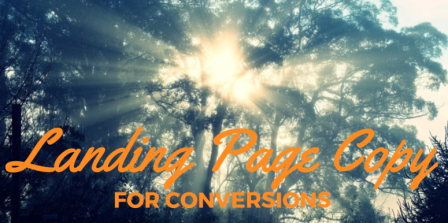
As a copywriter, I care about writing landing pages that convert. I’m obsessive about figuring out what makes people click. Today, I’m sharing 9 landing page copywriting principles that can be used to increase conversions.
1. Say goodbye to landing page copy bloat
When writing an essay for a college course, students want to make their work as long as possible, desperate to hit a page or word count. But when it comes to effective landing page copywriting, concision is key, because your prospects are busy.
Being concise means making your point quickly, without extra words that don’t add anything. Here are some examples that show how being concise can lead to better, clearer messaging.

The most common problems I see that contribute to landing page bloat are:
- Too many adverbs (obviously, actually, quickly, easily)
- Use of the passive voice (Passive: The price of the paper clips has been lowered by 20%. Active: The paper clip price is now 20% lower)
- Using redundant pairs (Instead of writing “Each and every customer will be happy,” write “Every customer will be happy.”)
- Too many determiners and modifiers (Instead of writing “Any way that you approach this will yield results,” write “Any approach will yield results.”
- Lack of editing. You should delete all words that give more detail than necessary or explain something that’s obvious.
2. Don’t be afraid to go longform
When it comes to copywriting for landing pages, you don’t want bloated copy. The page should be clear and easy to read, written to someone reading at a 6th grade level. Still, you need to make sure a customer’s questions are answered.
Many of the most successful landing pages are lengthy, detailing everything a customer needs to know. Longer landing pages tend to be more comprehensive, which leads to more opportunities for links, and a greater likelihood of ranking in search. Sherice Jacob, in an article for Unbounce, reported that Conversion Rate Experts increased sales by 52% after implementing a much longer page.
When I worked at Grasshopper, I helped refine our 800 numbers landing page, which now ranks #1 for the query. The page is 1671 words long, and allows someone to scroll through to find answers to their most pressing questions.

WordStream has also found through testing that long landing pages with more information below the fold convert better than short landing pages for some offers, such as the AdWords Grader.
Pro-tip: Your company is unique, so it’s important to test different landing page variants to see what works best for each offer. Try testing a very lengthy page versus a short one.
3. Provide social proof on your landing page
Providing proof that customers trust you is essential. If you want landing page visitors to convert, you should include customer testimonials in your landing page copy.
Think of your landing page like a home. When you have a guest come over, you want them to feel welcome. A landing page functions the same way. When a customer comes to your landing page, you want to usher them in and make them trust you. You want to show that you know what you’re doing, and that customers are successful because of you.
QuickBooks does an excellent job of sharing customer stories on their small business accounting landing page. Rather than including written testimonials from customers, they show videos of three customers explaining what they get out using the software.
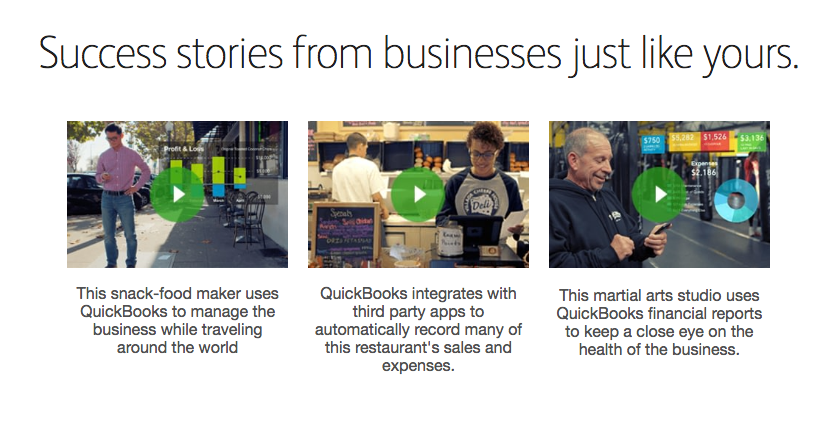
4. Perfect your unique selling proposition
Customers buy your product for a reason, and not because they’re in love with your brand and want to support you. They buy products that can enhance their everyday life.
You need to position your customer as the hero of your landing page, and show what they’ll get out of choosing you over the competition. How to do this? Refine your unique value proposition.
Your value proposition is a phrase or short sentence that’s often used as a headline or sub-header on a landing page. Usually, a value proposition explains what makes your business different from everyone else in your market.
When you’re writing one, you have to explain how your business solves your ideal customer’s problem. The best place to start is by looking at the websites of other brand’s, especially those you like. Here are a few examples of compelling value propositions:
- Campaign Monitor — Campaign Monitor makes it radically easy to create, send and measure the impact of your email marketing campaigns.
- WordStream — Online Advertising Made Easy.
- Gusto — Discover how easy it can be to manage payroll and benefits for your business.

5. Use the same words as your customers
One of the biggest problems in marketing today is that we tend to write for our cronies, not for our customers. We’re happy to drop terms like inbound marketing and KPIs, without considering if our audience knows what we mean. Behind our computer screens, it’s easy to forget what our customers are actually like.
When writing landing pages, ask yourself:
- What’s driving my reader to explore this product?
- What are their hopes and dreams?
- Why do they do the job that they do?
- Will they have to convince their boss of the value?
- What are their biggest questions going to be?
When it comes to writing copy for landing pages, you have to talk directly to your customers, and use words that will resonate with them. Imagine as though you’re writing to one ideal customer, not to a sea of potential people. This will allow you to be more specific, more targeted, and ultimately more successful.
Often, the best copy comes directly from the mouth of a customer who is able to articulate exactly how the product benefits them. Aside from surveys and interviews, you can find examples of words your ideal customers would use on online forums, review sites, blog comments, and social media.
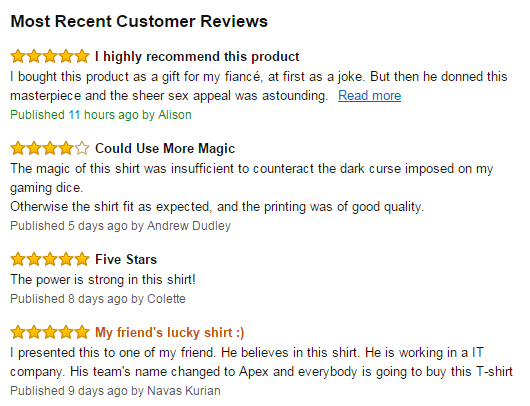
[Learn more about writing in the voice of the customer in this guide.]
6. A/B test your copy
Writing is a creative process, but it’s impossible to know what will lead to the highest conversion rate for your particular landing pages. That’s why it’s essential to A/B test your copy.
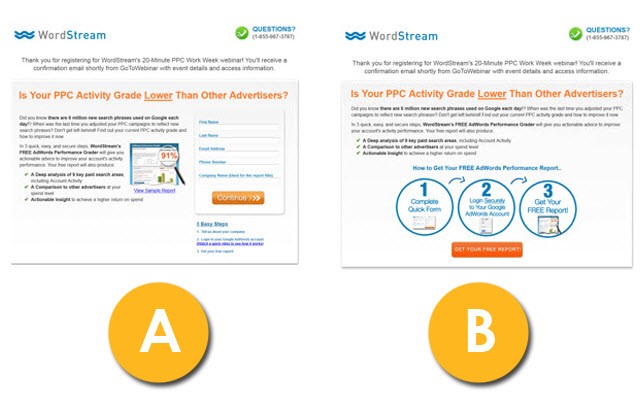
Every business is different, so while you can start with best practices, there aren’t hard and fast rules on what will work. It’s more important to test out different variants, especially when it comes to headlines, length of the landing page, and color schemes, to see how it affects conversions.
Brad Shorr, Director of Content & Social Media for Straight North, has found that small changes in wording can dramatically increase conversions.
Brad A/B tested these calls to action:
A. Get $ 10 off the first purchase. Book online now!
B. Get an additional $ 10 off. Book online now.
He was surprised to find that the CTR doubled with option B.
Good copywriting conquers all
There’s a lot of so-so writing on the internet, but there’s also a lot of compelling, persuasive writing that makes you want to act. If you’re writing copy for a landing page, the most important principle is to be concise and clear.
If a customer can quickly understand what you’re offering, they’ll be able to assess whether it’s right for them. Ultimately, good copy can help you convert more qualified prospects who can become customers.
Digital & Social Articles on Business 2 Community(95)
Report Post



